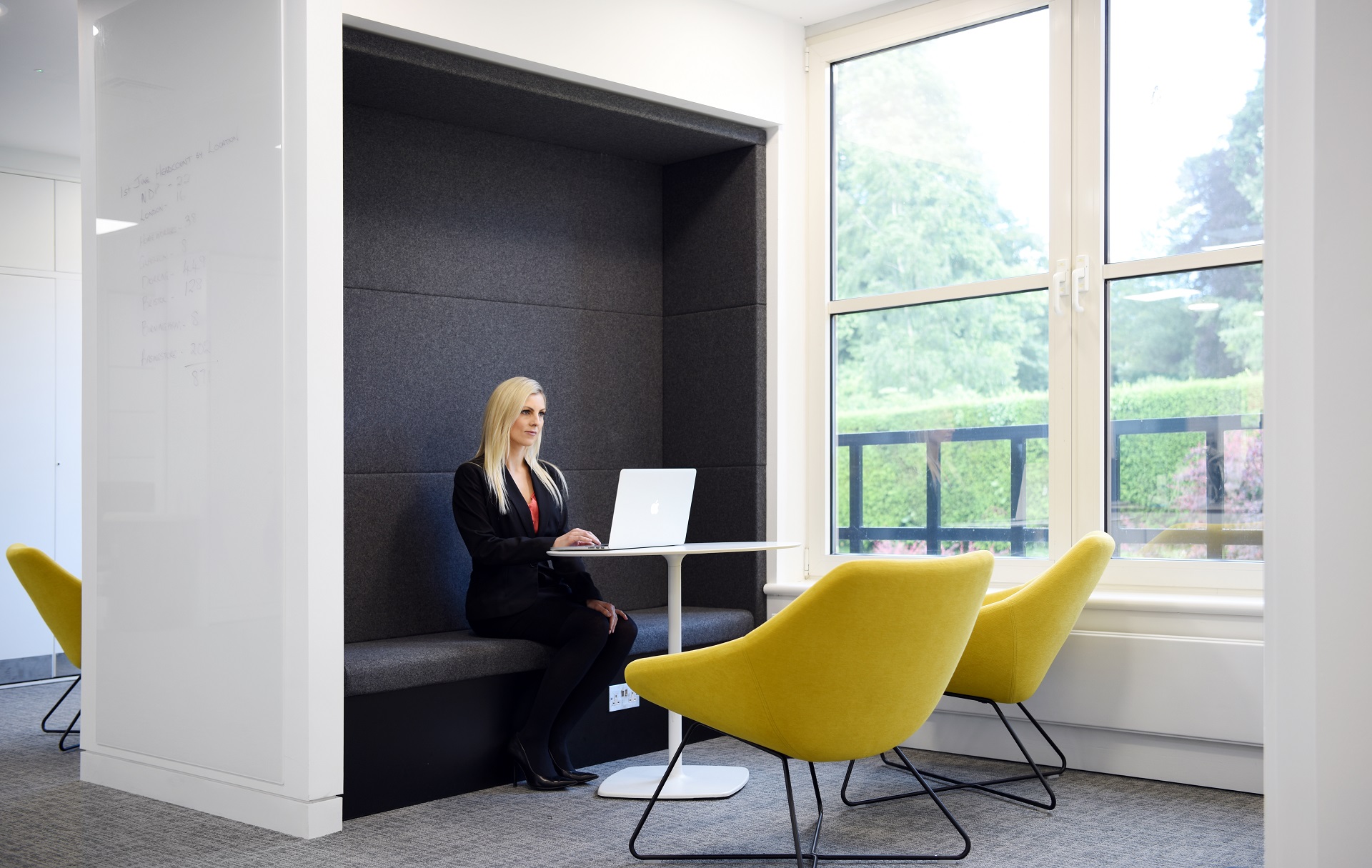Effective workplace change management.
Delivering an office relocation or refurbishment programme will inevitably involve some change management to deliver the desired results. The broader the scope of the change the greater the need for a well-managed change process.
People have an innate resistance to change and even though the change may be founded on good business practice, staff often feel vulnerable and as a result are reluctant to ‘let-go’ of the status quo. Consequently, workplace change management should be executed through a deliberate and structured programme which provides staff with the support they need to minimise down-time and productivity loss.
What are the benefits of an office design change management programme?
A well-executed change management programme reduces anxiety and improves employee retention, well-being and overall satisfaction with the company. Staff want to feel respected and change management helps them become more satisfied with their new workspace and the employee experience. That’s why change management efforts led by trained experts can deliver a work environment where employees are more productive and engage with their new space from the start.
What are the 5 stages of a successful change management programme?
- Create the business case for change
- Develop a unified vision
- Communicate for buy-in
- Manage the change
- Adopt and adjust to the change.

- Creating the business case for change
Any workplace change programme should start with a very clear understanding of the organisation’s reason and capacity for change. It’s critical that senior leadership are transparent from the outset about the reasons for change and what the expected benefits will be.
There are many good reasons for workplace change including lease expiration, business re-structuring, regulatory changes, expansion or downsizing or a desire to implement better-ways-of-working. Whatever the reasons are, the business case should be data-driven and key deliverables should be clearly documented before the change process starts.
Being clear about the business case for change sets the stage to create the common vision.
- Creating the common vision.
This is about engaging the whole team in the common vision and spelling out how the future will be different from the past to gain the broadest possible organisational engagement.
Evidenced-based office design is important in creating the vision and capturing the business culture in the design. As organisations move towards a ‘work anywhere’ approach and the creation of spaces that are inclusive, and foster team-work it is essential to understand the design research and underlying data to leverage maximum value from the change.
It is important that staff are educated and employees from all parts of an organisation are involved in the choices that will determine the final design outcomes to achieve acceptance of the future workspace. Having an executive sponsor who is properly engaged in the design process will facilitate the transition into the new workspace.
- Communicating for buy-in
Clear and consistent messaging to all the stakeholders affected by the change will ensure that people are prepared for the workplace transformation. The processes developed through the clarification of the business case and creating the common vision will form the basis for explaining to employees what they will gain from their new workspace. It’s critical to focus on ‘what’s in it for them’.
Effective communication will need to continue throughout the lifecycle of the change process and should be targeted to the specific audiences and age-groups within the staff.
Communication methods may differ but should include personal interactions, such as face-to-face meetings, town-hall meetings and round table discussions as well as intranet updates and opportunities for virtual tours.
Ultimately, it’s important that the messaging is clear, transparent and regular to overcome inertia or head-off resistance to change.
- Managing the change.
There are several ways of managing change but one of the most inclusive and successful approaches, is to retain a group of change agents whose principal role is to act as a promoter for their department, and for the improvements in the new workspace. It’s important that this group are empowered to speak on behalf of their respective teams and have the skills to both sell the changes internally and act as a conduit for observations and comments between the departments they represent and the change management and project teams.
The change agents also have an important role to play in managing and planning activities such as pilot schemes and furniture sampling which help to dispel resistance from detractors or sceptics and start to accustom teams to what the new workspace might ‘look and feel’ like.
- Adopting the change
The adoption stage requires senior leadership to be foremost in practicing the new ways of working and displaying the desired work practices. Actively and regularly reviewing the change programme will also enable leadership to understand how the changes have met their key deliverables on the project and how well the organisation has embraced the new workspace and new-ways-of-working.
Change management is ongoing and the data and deliverables which have been collected as part of the change management process should be used beyond the project life cycle to support ongoing improvements and become the basis of the broader workplace strategy.
Sharing of best-practice should be encouraged and teams who are modelling desired behaviours and readily adopting the ‘new-normal’ can be engaged in cross-departmental training or targeted guidance sessions to assist other teams to engage with their new workspace.
